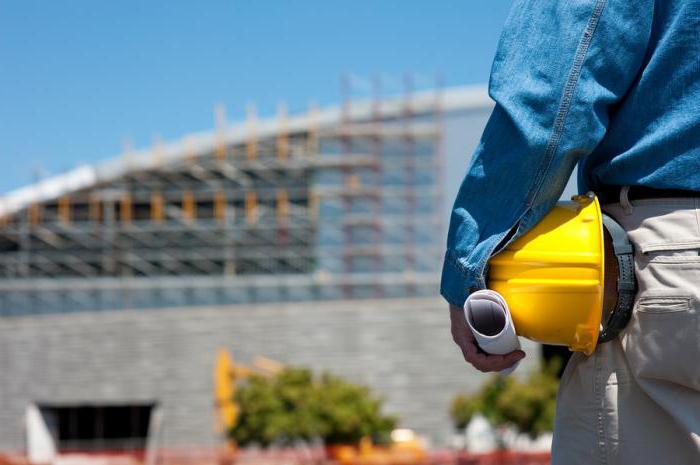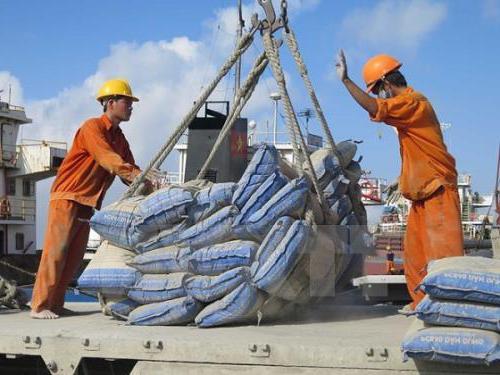The cost of construction depends on many indicators, the main of which are: the quantity and cost of labor, material resources and the working time of the equipment. That is, knowing the amount of resources needed, for example, for the overhaul of the building, and current prices for them, we can talk about the cost of the facility as a whole and plan the material and technical supply.
The rate of consumption of material in construction is determined by the estimated regulatory base, which contains information on labor costs, average level of work, composition and time of operation of the equipment, and also includes information on materials and their consumption in physical units.

Basic concepts
Reconstruction of existing facilities, overhaul and maintenance, restoration of architectural structures and the construction of new buildings - all this is united by one term “construction”. Wherein material resources (MR) - a set of objects of labor that are used in its process. These include products, materials, semi-finished products, parts and structural elements. But technological equipment, furniture or inventory are not related to their composition.
The average indicator of the need for a specific subject of labor necessary for the production of a unit of volume of construction work is defined as the rate of consumption of material in construction.
Material classification
In modern construction, the nomenclature of materials used for it contains more than one hundred items. Depending on their origin, this entire list is divided into 2 types: natural and artificial materials. The first are extracted from the bowels of the earth - stone, sand, wood, straw. And the second ones are a product of the processing of natural raw materials: brick, cement, glass, ceramics.

By appointment, the types of building materials are divided into 2 categories:
- general purpose used in the construction of structures and buildings of various types. This group includes bricks, cement, concrete;
- special purpose with improved properties. For example, heat-insulating, acoustic, waterproofing materials.
Classification according to the manufacturing method and technological characteristic distinguishes 4 groups of materials: natural stone, binders, wood and metal.
Of course, every work in construction involves the use of a specific material with certain properties. So, for the decoration of the facade of buildings it is necessary that it possesses moisture and frost resistance. Facing brick is endowed with such properties, therefore, the norm for the external coating of the walls of buildings and structures provides for the consumption of this type of material resource.
Need for material resources
The consumption of materials for the construction of the facility is established at the initial stage of this entire lengthy process. It all starts with project development or drafting defective statement (DW), depending on the complexity of the work. In any case, regarding their list and volumes, the need for resources is determined.

The rate of material consumption in construction can be found in two ways: standard, when using the estimated base, and design - according to the drawings. Estimated standards determine the flow unequivocally and without adjustments. They contain a list of work processes that are selected in accordance with the specific construction technology described in the CF / project.
The design method involves calculating the consumption of materials according to specifications, working drawings and production standards. This method is considered more objective, since the planned need is subject to adjustment and as a result, the consumption of building materials is close to the actual one.
Estimated Norms
Now not a single construction site is complete without the preparation of design estimates. It is she who acts as the basis for concluding a contract for the implementation of construction work. An estimate is made by choosing from a variety of normative collections of norms that correspond to the technology of a particular construction.
The average set of resources installed on the work meter is called the estimated norm. Thanks to it, the standard amount of resources for earthworks, piling, finishing, insulation, painting, etc. is determined.
Now on the territory of Russia there are state elementary estimated norms (briefly GESN), used for making estimates by the resource method, and federal unit rates (FER), which are the basis for creating estimates using the base-index method.

HES example
So, in the collection 2001-63 the norms for wallpaper, facing and glass works are presented, which contain information on the consumption of material resources. The technical part of the normative document describes how to determine the amount of work, for example, when changing glasses, the glazing area serves as their meter.
So, if we take the norm 63-1-2, then it gives information about the resources needed to change glasses with an area of up to 0.5 m², a thickness of up to 3 mm on glazing beads. The norm includes the scope of work:
- excavation of old glass;
- removal of glazing beads;
- cutting and fitting new glass;
- its insert with the installation of glazing beads;
- glass wiping.

Norm meter - 100 m². This suggests that the resource consumption shown in the table corresponds to the volume of work per 100 m² of glazing.
The main types of building materials, according to the given norm, are glass and glazing beads. Moreover, the consumption rate of glass per 100 m² of work is 115 m², which means that the losses possible during the cutting process are taken into account.
Production rate
Production norms of expenses are developed according to the guidelines with observance of the technical regulation of material losses, based on the conditions of production of work provided for by SNiP. The formula for the production rate of consumption of building materials is as follows:
H = Hh+ H0+ HPwhere
Nh - this is the amount of material excluding losses and waste arising during the movement, storage and placement of it in the case;
N0+ HP - this, respectively, wastes and losses, without which not a single production process can do. For example, trimming cable, pipes, glass, sawdust, loss of bulk materials.

Individual consumption rates
Individual quotas are developed in cases where these works are not available in the range of estimated and production standards. They are created inside the construction and installation organization, and they determine the rate of consumption of material in construction during the manufacture of individual (according to the project) metal structures, frames, reinforcing meshes or sawn timber.
These standards are created in order to be used in the preparation of estimates involving federal funds, and are subject to examination. They must also be approved by the chief engineer at the enterprise.

Actual consumption
Even if the construction is planned for more than one year, then all the same monthly reports on it are provided to the accounting department. One of these documents is the report of the superintendent on the actual consumption of materials. Reason for write off materials serve:
- building codes that determine consumption;
- consumption rates for a specific production approved by the head of the enterprise;
- the journal KS-6a, which records work progress;
- report containing information about the actual expense.
A report is executed in the form of M-29, which contains the table below:
| No. p / p | Material Code | Name | Units measuring | Consumption rate | Factual expense | Saving / overspending |
| 1 | 1001 | Facing brick | PC. | 150 | 150 | - |
| 2 | 1121 | Primer | l | 27,8 | 30 | +2,2 |
| 3 | 1321 | Construction nails | t | 0,0002 | 0,00019 | -0,00001 |
To this report, the site manager will have to attach an explanatory note to the technical department about the excess overspending of the primer. It will have to indicate the reasons for this state of affairs.
Building materials and work list
Norms, as you know, are of an average nature and do not always take into account modern production technology, which implies the use of new materials. Below is a table with background information on the consumption of materials when performing popular civil works.
| No. p / p | Name | Consumption | Note |
| Painting works: | |||
| 1 | Water-based paint | 9-15 l / m2 | 2 layers |
| 2 | Single-layer water-based emulsion | 8 l / m2 | |
| 3 | Acrylic paint | 10-14 l / m2 | 2 layers |
| Finishing work: | |||
| 4 | Primer "Betocontact" | 0.35 kg / m2 | Layer thickness 1 cm |
| 5 | Plaster mix "Rotband" | 8.5 kg / m2 | Layer thickness 1 cm |
| 6 | Tile adhesive CM 9 | 3.2 kg / m2 | Tile side up to 200 mm |
| Floors: | |||
| 7 | Cement screed "Knauf Ubo" | 7.5 kg / m2 | 1 cm |
| 8 | Cement-based sand concrete M-300 | 20 kg / m2 | 1 cm |
| 9 | Quick hardening universal bulk floor "Eunice Horizon" | 17 kg / m2 | 1 cm |
Its use will help to understand, albeit approximate, the cost of carrying out certain works, and indeed construction in general.








